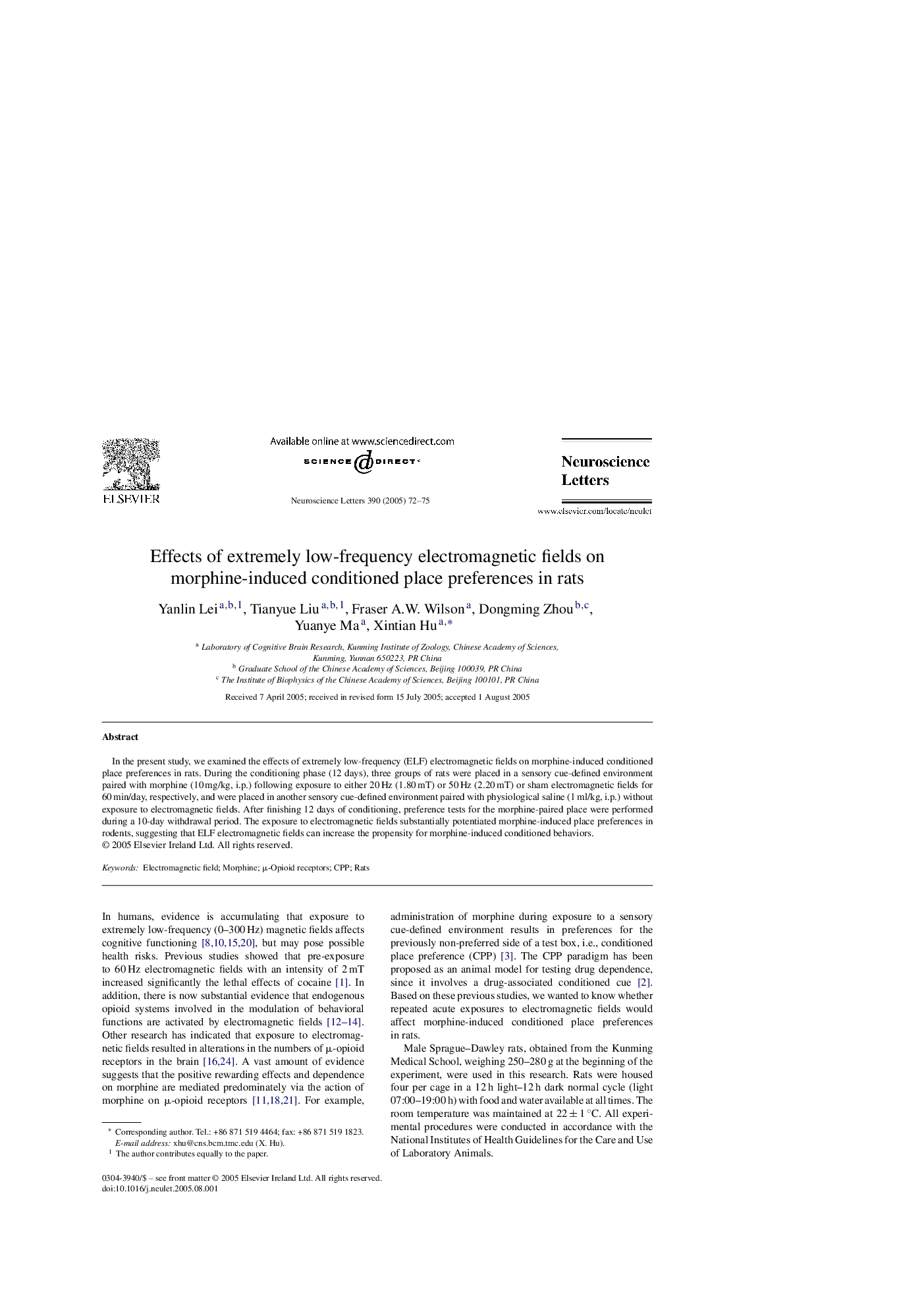| Article ID | Journal | Published Year | Pages | File Type |
|---|---|---|---|---|
| 9428887 | Neuroscience Letters | 2005 | 4 Pages |
Abstract
In the present study, we examined the effects of extremely low-frequency (ELF) electromagnetic fields on morphine-induced conditioned place preferences in rats. During the conditioning phase (12 days), three groups of rats were placed in a sensory cue-defined environment paired with morphine (10Â mg/kg, i.p.) following exposure to either 20Â Hz (1.80Â mT) or 50Â Hz (2.20Â mT) or sham electromagnetic fields for 60Â min/day, respectively, and were placed in another sensory cue-defined environment paired with physiological saline (1Â ml/kg, i.p.) without exposure to electromagnetic fields. After finishing 12 days of conditioning, preference tests for the morphine-paired place were performed during a 10-day withdrawal period. The exposure to electromagnetic fields substantially potentiated morphine-induced place preferences in rodents, suggesting that ELF electromagnetic fields can increase the propensity for morphine-induced conditioned behaviors.
Related Topics
Life Sciences
Neuroscience
Neuroscience (General)
Authors
Yanlin Lei, Tianyue Liu, Fraser A.W. Wilson, Dongming Zhou, Yuanye Ma, Xintian Hu,
